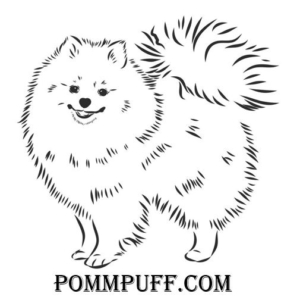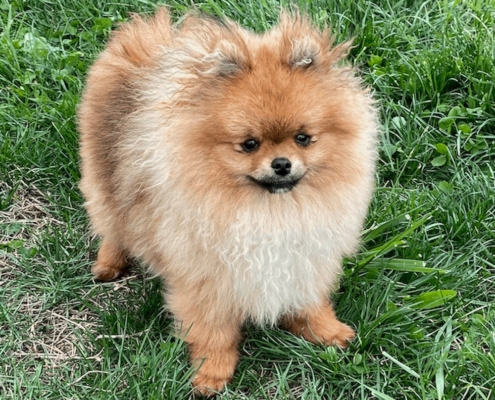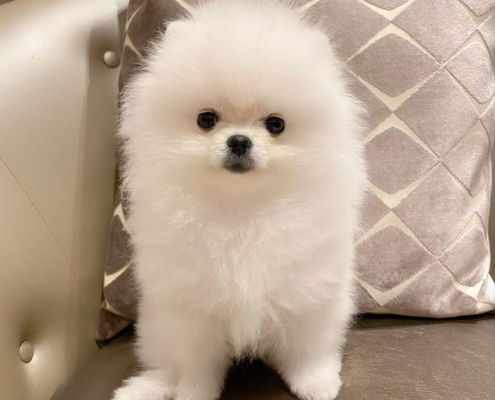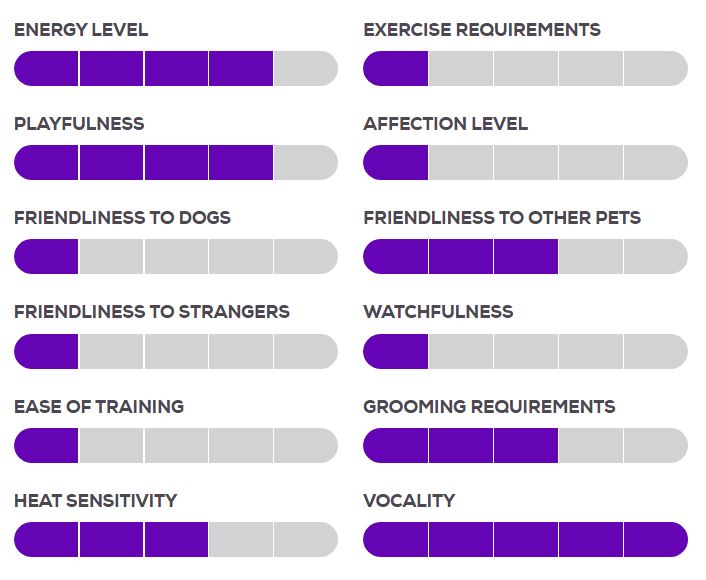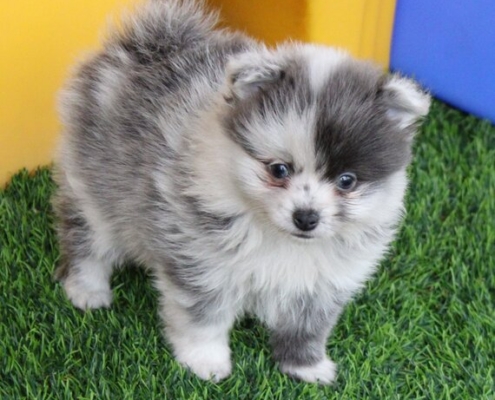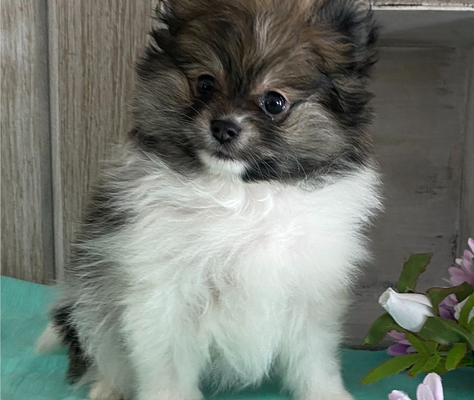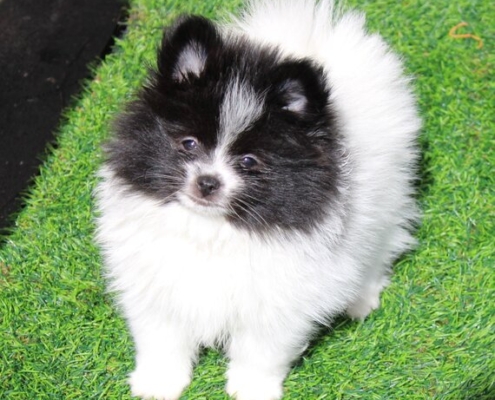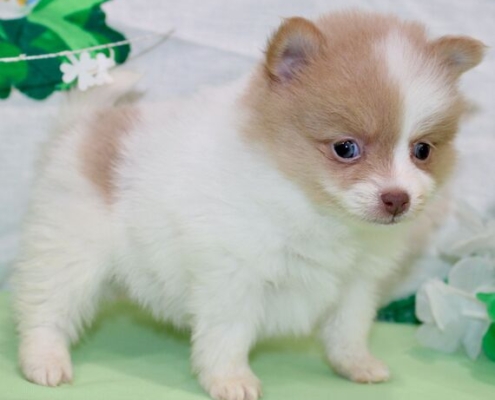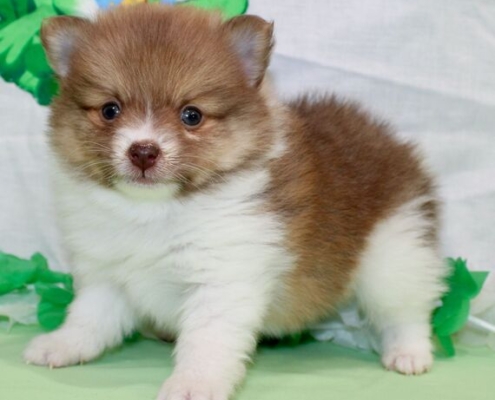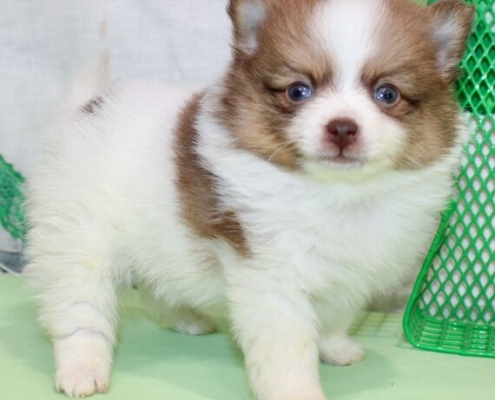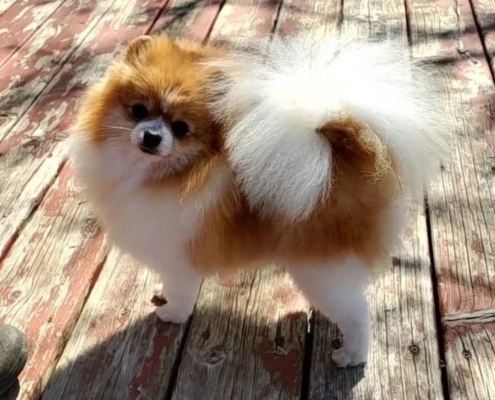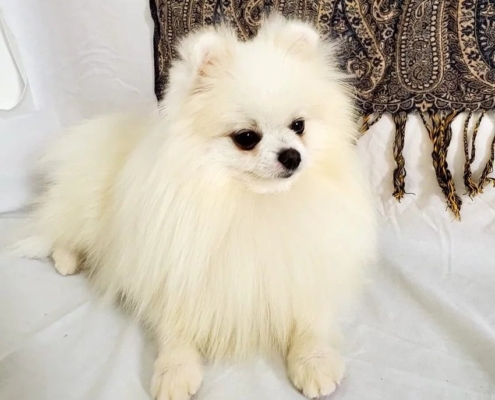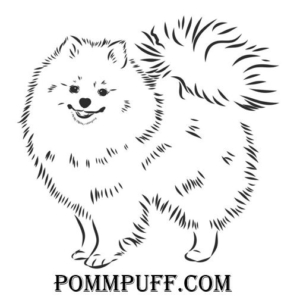pomeranian for sale toronto
pomeranian for sale toronto
pomeranian for sale toronto
pomeranian for sale toronto
The Pomeranian is a small, square-proportioned, miniature spitz with a cobby, rounded body.
This breed shares the spitz characteristics of small ears, double coat, and curled tail.
The expression is alert and fox-like, and the gait is smooth and free with good reach and drive.
The soft thick undercoat combined with the longer harsh outer coat, standing off from the body, combine to give the dog a unique puffy appearance.
This look is further accentuated by the thick ruff and a head carriage that is naturally upgazing.
The Pomeranian is a cocky and animated Nordic dog with great intelligence, making him a great family pet.
His smiling, foxy face and vivacious personality makes him one of the world’s most popular toy breeds.
pomeranian for sale toronto
pomeranian for sale toronto
pomeranian for sale toronto
pomeranian for sale toronto
| DATE OF ORIGIN | AREA OF ORIGIN | FAMILY | HEIGHT | WEIGHT | TYPE |
| 1800s | Germany | Spitz | 8-11″ | 3-7 lb | Toy |
pomeranian for sale toronto
pomeranian for sale toronto
History
pomeranian for sale toronto
pomeranian for sale toronto
The smallest member of the spitz family, the Pomeranian boasts tough sledding dog ancestors.
Exactly when the dog began to be bred down in size is not known; nor is it known exactly where this miniaturization took place, although Germany, and specifically, Pomerania, is the most likely locale.
The breed’s likely ancestor was the Deutscher Spitz. Only when the breed was taken to England was it dubbed the Pomeranian, but these early dogs were not the “Poms” known today.
They weighed as much as 30 pounds and were often white.
In fact, the Japanese Spitz closely resembles these early Pomeranians and very likely descends from them.
Although the Pomeranian was recognized by the English Kennel Club in 1870, it was not until Queen Victoria brought a Pomeranian from Italy that popularity grew.
The queen’s Pomeranians were rather large gray dogs.
By 1900, Poms had been recognized by the AKC, and dogs were being shown in both England and America in an array of colors.
This miniature sled dog always attracts admirers and is a very popular pet and show dog.
pomeranian for sale toronto
pomeranian for sale toronto
pomeranian for sale toronto
pomeranian for sale toronto
Temperament
pomeranian for sale toronto
pomeranian for sale toronto
Bouncy, bold, and busy, the Pomeranian makes the most of every day.
This breed is curious, playful, self-confident (even cocky), and attentive, ever ready for a game or adventure.
Reserved toward strangers, some can be territorial toward other dogs, and some enjoy a good barking session.
The Pomeranian is inquisitive, bold and lively.
pomeranian for sale toronto
pomeranian for sale toronto
Upkeep
pomeranian for sale toronto
pomeranian for sale toronto
The Pomeranian is active but diminutive, needing daily exercise but able to meet activity needs with indoor games or short walks.
The double coat needs brushing twice weekly, more when shedding.
pomeranian for sale toronto
pomeranian for sale toronto
Health
pomeranian for sale toronto
pomeranian for sale toronto
-
Major concerns: patellar luxation
-
Minor concerns: open fontanel, hypoglycemia, shoulder luxation, PRA, entropion
-
Occasionally seen: tracheal collapse, PDA, Legg-Perthes
-
Suggested tests: knee, eye, cardiac, hip
-
Life span: 12–16 years
pomeranian for sale toronto
pomeranian for sale toronto
Disclaimer
pomeranian for sale toronto
pomeranian for sale toronto
Note: While the characteristics mentioned here may frequently represent this breed, dogs are individuals whose personalities and appearances will vary.
Please consult the adoption organization for details on a specific pet.
pomeranian for sale toronto
pomeranian for sale toronto
Pomeranian (Pom): Dog Breed Characteristics & Care
pomeranian for sale toronto
pomeranian for sale toronto
pomeranian for sale toronto
pomeranian for sale toronto
The Pomeranian is a perky and bold toy dog breed with a long coat and distinctive neck ruff that hails from what’s now Germany and Poland.
Also called a Pom, this breed is typically friendly but can be bossy at times.
Still, it is extremely loyal to its loved ones and can be an effective guard dog despite its diminutive stature.
With proper training, the Pomeranian can make an excellent companion, though this dog is not for everyone.
Families with young children might not be an ideal home for a Pom, but the breed often gets along well with older and calmer children.
pomeranian for sale toronto
pomeranian for sale toronto
Key Characteristics of the Breed
pomeranian for sale toronto
pomeranian for sale toronto
The Pomeranian dog may have a tiny body, but he has a commanding, big-dog demeanor.
They are alert and intelligent, making them great watchdogs.
They’re also easily trained, mastering tricks and games with ease.
As much as Pomeranians enjoy being lap dogs, they’re also an active breed.
For most, indoor play and short walks are sufficient, making them a great dog for either the city or the suburbs.
Poms are notorious for escaping through small crevices or gaps in fencing and even climbing over short fences.
Their intelligence, coupled with their energy, makes them great for activities like agility, rally and obedience.
They also make excellent therapy dogs.
pomeranian for sale toronto
pomeranian for sale toronto
Breed Overview
pomeranian for sale toronto
pomeranian for sale toronto
| ORIGIN | HYPOALLERGENIC | TEMPERAMENT | LIFE SPAN | COAT COLOR | COAT | WEIGHT | HEIGHT | GROUP |
| Germany/Poland | No | Bold, alert, lively, affectionate | 12 to 16 years | Comes in many colors, though the most common are red, orange, cream, sable, black, brown, and blue | Long double coat | 3 to 7 pounds | 6 to 7 inches | Toy |
pomeranian for sale toronto
pomeranian for sale toronto
History of the Breed
pomeranian for sale toronto
pomeranian for sale toronto
The Pomeranian is a miniaturized relation of the powerful sled dogs of the Artic.
The Pom, also known as the Zwergspitz, is the smallest of these sled or “spitz” dogs.
Queen Victoria was such a fan of the breed after bringing one back from Italy, she became a breeder of the tiny dog.
She’s also credited with reducing the Pom’s size.
Other famous historical figures fond of Pomeranians include Marie Antoinette, Emile Zola and Wolfgang Amadeus Mozart.
pomeranian for sale toronto
pomeranian for sale toronto
Lifespan of the Pomeranian
pomeranian for sale toronto
pomeranian for sale toronto
12 to 16 years
Colours
The Pomeranian’s coat comes in many colours including solid or combinations of beaver, black, blue, blue merle, chocolate, cream, orange, red and white.
It’s most commonly seen in orange or red, however.
Does the Pomeranian Shed?
A Pomeranian’s double coat is one of its most distinguishing characteristics and requires frequent brushing.
Despite their fluffy coat, they are not heavy shedders.
As a result, this breed can be good for people with allergies.
Best Dog Food For Pomeranians
When it comes to choosing the best dog food for your Pomeranian, keep his unique breed traits in mind.
Because Pomeranians are a toy breed, select a toy or small breed dog food formulated to maintain his ideal body condition.
These foods may include:
• Purina Pro Plan FOCUS Small Breed
• Beyond Small Dog
• Purina One Smartblend Small Breed
Best Dog Food For Pomeranian Puppies
Remember puppies of all breeds have unique nutritional needs during their first year of life.
Selecting a formula containing DHA will nourish brain and vision development and antioxidants support their developing immune system to ensure they thrive during this critical time.
The following foods meet the needs of a growing puppy:
• Purina Pro Plan FOCUS Puppy Small Breed
• Purina One Healthy Puppy Formula
• Puppy Chow Natural
Facts About the Pomeranian Dog Breed
• The Pomeranian’s popularity dramatically increased when Queen Victoria brought one back to England from Italy in 1888.
• A Pomeranian named “Turi” lay next to the Queen at her death.
• The breed is a member of the family of dogs unofficially known as the “Spitz Group.”
• Pomeranians used to weigh nearly 30 pounds and worked as sheep herders.
• The breed didn’t originate in Pomerania, but that may have been where the dogs were downsized.
• They are a descendent of sled dogs of Iceland and Lapland.
Characteristics of the Pomeranian
Pomeranians generally have a bold and lively temperament.
Their personality is much bigger than their diminutive size.
They can act as alert watch dogs and tend to be affectionate with their owners.
| Amount of Shedding | Tendency to Bark | Intelligence | Trainability | Energy Level | Playfulness | Exercise Needs | Pet-Friendly | Kid-Friendly | Friendliness | Affection Level |
| Medium | High | High | Medium | Medium | Medium | Medium | Medium | Medium | Medium | High |
History of the Pomeranian
The Pomeranian is a descendant of spitz-type sled dogs from Iceland and Lapland.
Several hundred years ago, these predecessors to the Pom made their way to Pomerania, which is now parts of Poland and Germany.
While there, breeders somewhat diminished the dogs’ size.
The modern Pom is the smallest spitz-type dog breed.
The Pomeranian’s popularity rose when members of the British royal family took a liking to it.
At that time, the breed was still larger than today’s version.
But in the late 1800s, Queen Victoria became a breeder and won a breed competition with a particularly small Pomeranian.
After that, it became popular to breed the dogs even smaller.
Some notable Pomeranian owners throughout history include Marie Antoinette and Wolfgang Amadeus Mozart.
Two Pomeranians also were among the three dogs that survived the sinking of the Titanic in 1912.
The Pomeranian gained popularity in the United States around the turn of the 20th century and today remains a popular dog breed.
The American Kennel Club recognized the breed in 1888.
Pomeranian Care
Pomeranians need consistent training and regular exercise to be happy, healthy dogs.
Their thick coat also requires a fair amount of upkeep.
Plus, owners must be cautious about Pomeranians in hot weather, as well as with predators and any rough encounters with people or other pets.
Exercise
Pomeranians have a medium energy level that shouldn’t be underestimated just because they’re small dogs.
They should get at least an hour per day of physical activity, including walks and playing with toys.
They also should have the chance to freely run around each day (and they don’t need much space to do it).
Moreover, puzzle toys can help to provide the mental stimulation that Poms need.
While Poms do fairly well in cold weather, their thick coat can cause them to overheat in hot weather.
So even though they generally have good endurance, keep outside activity to short sessions in the heat.
Also, be sure to protect your Pom from predators—including large birds—when outside.
Grooming
The Pomeranian has a long, thick double coat that requires frequent grooming.
Plan to brush your Pom’s coat at least weekly to remove loose fur and prevent tangles and mats.
Poms also typically go through heavier seasonal sheds as the weather changes in the fall and spring, during which you’ll likely have to brush multiple times a week to keep up with the loose fur.
A bath with a thorough brushing will be required roughly every four to six weeks.
At that time, you also should clean your dog’s ears, and you might have to express its anal glands.
A groomer or vet’s office can do that for you if you’re not comfortable with it at home.
You’ll also have to trim your dog’s nails roughly every four to six weeks, especially if you hear them clicking on hard surfaces.
And you should aim to brush its teeth ideally every day.
Training
Pomeranians are moderately trainable dogs. While they are smart, they also can be stubborn.
So consistency and patience are essential when training a Pom.
Begin training and socialization early in puppyhood.
Work on house-training right away, so your dog doesn’t begin to develop any bad habits that are hard to break.
Also, socialize puppies with different people and in various environments to help curb their tendency to bark at strangers.
Pomeranians can coexist with other household pets when given the proper training and socialization.
But Poms generally won’t back down from a fight, even with a larger dog.
Plus, they can be injured in friendly but rough play.
So make sure all household pets—and people, especially young children—are well-mannered and gentle to safely live together.
Furthermore, Pomeranians can hurt themselves when jumping on and off of furniture, including couches and beds.
So it’s important either to train them to use a ramp or teach them to stay off furniture.
Common Health Problems
Pomeranians are typically healthy dogs.
But they are prone to a few common health conditions, including:
-
Luxating patella (kneecaps sliding out of place)
-
Collapsing trachea
-
Hypothyroidism
-
Congestive heart failure
-
Seizures
-
Progressive retinal atrophy (a degenerative eye disease)
